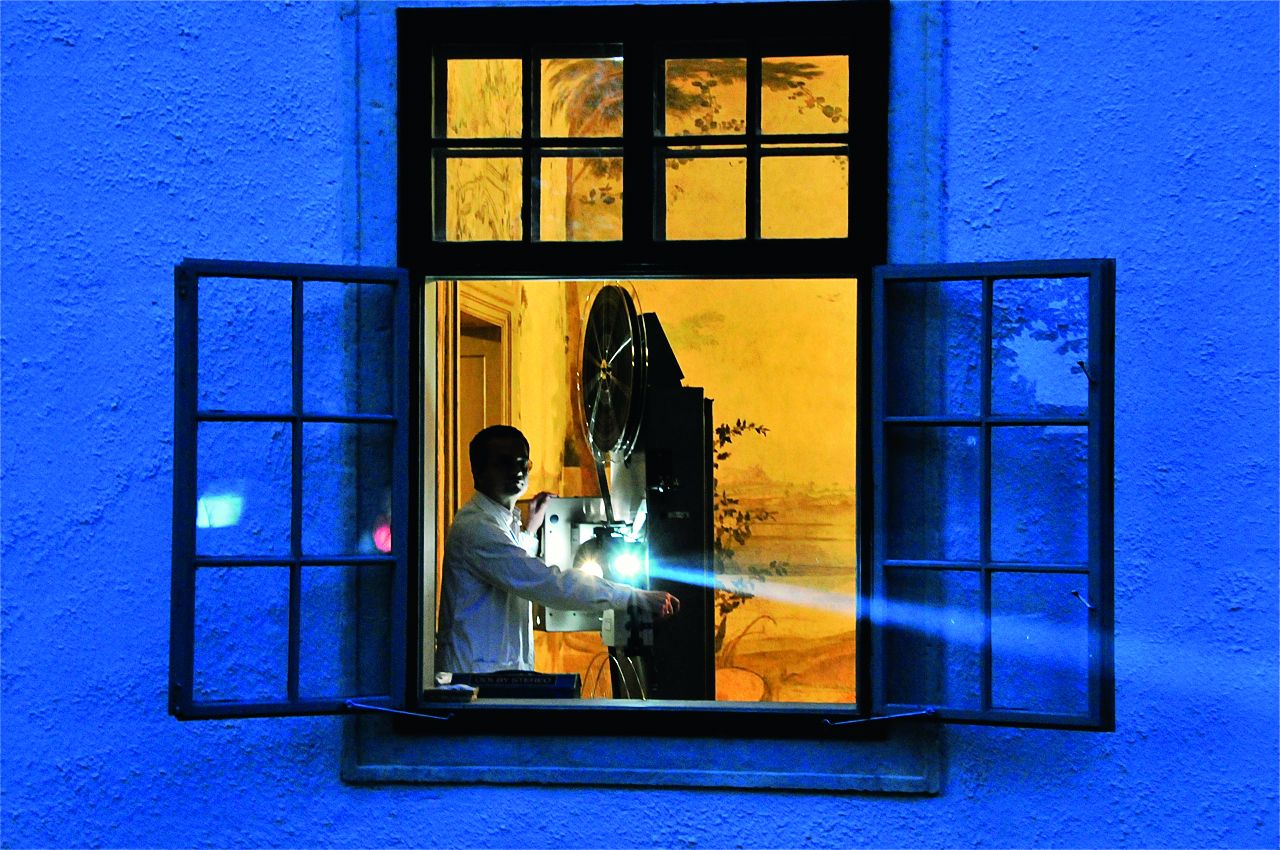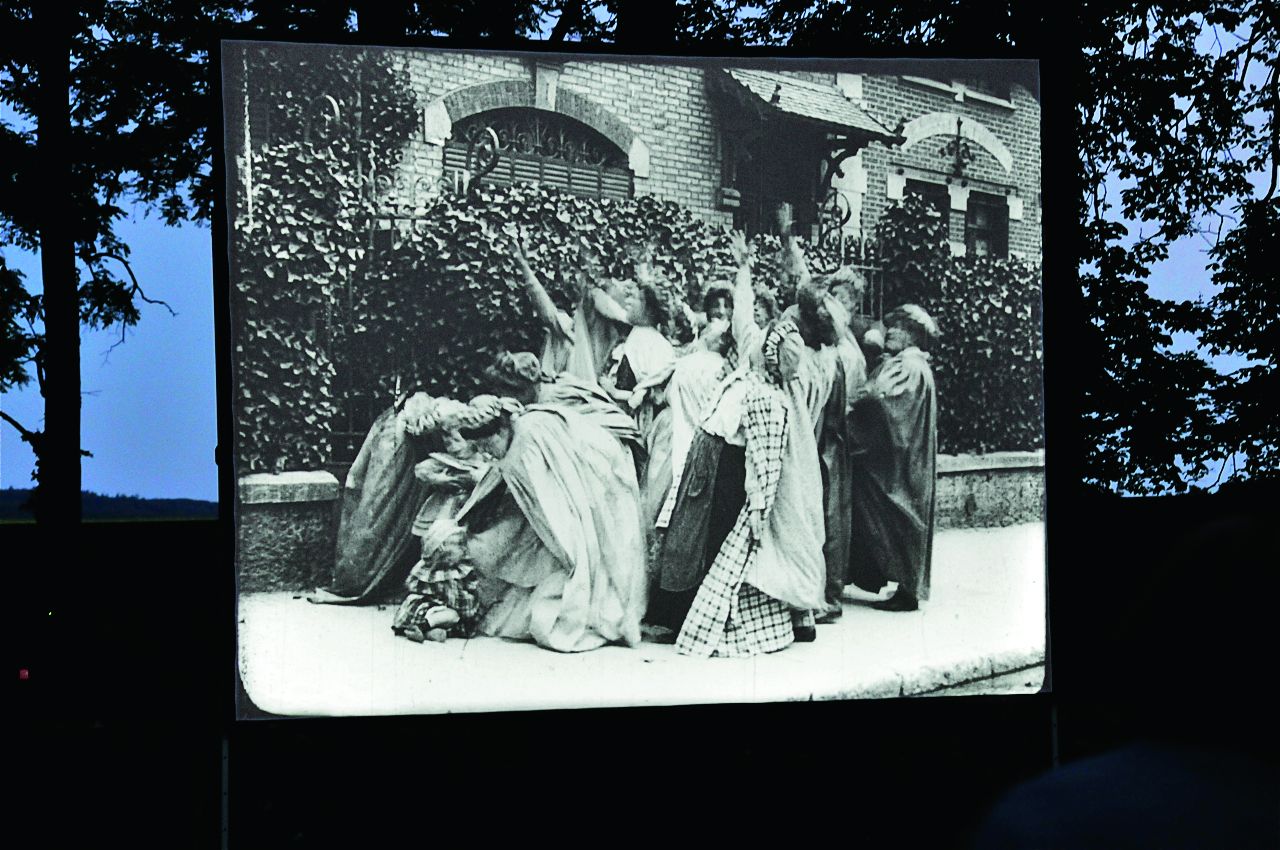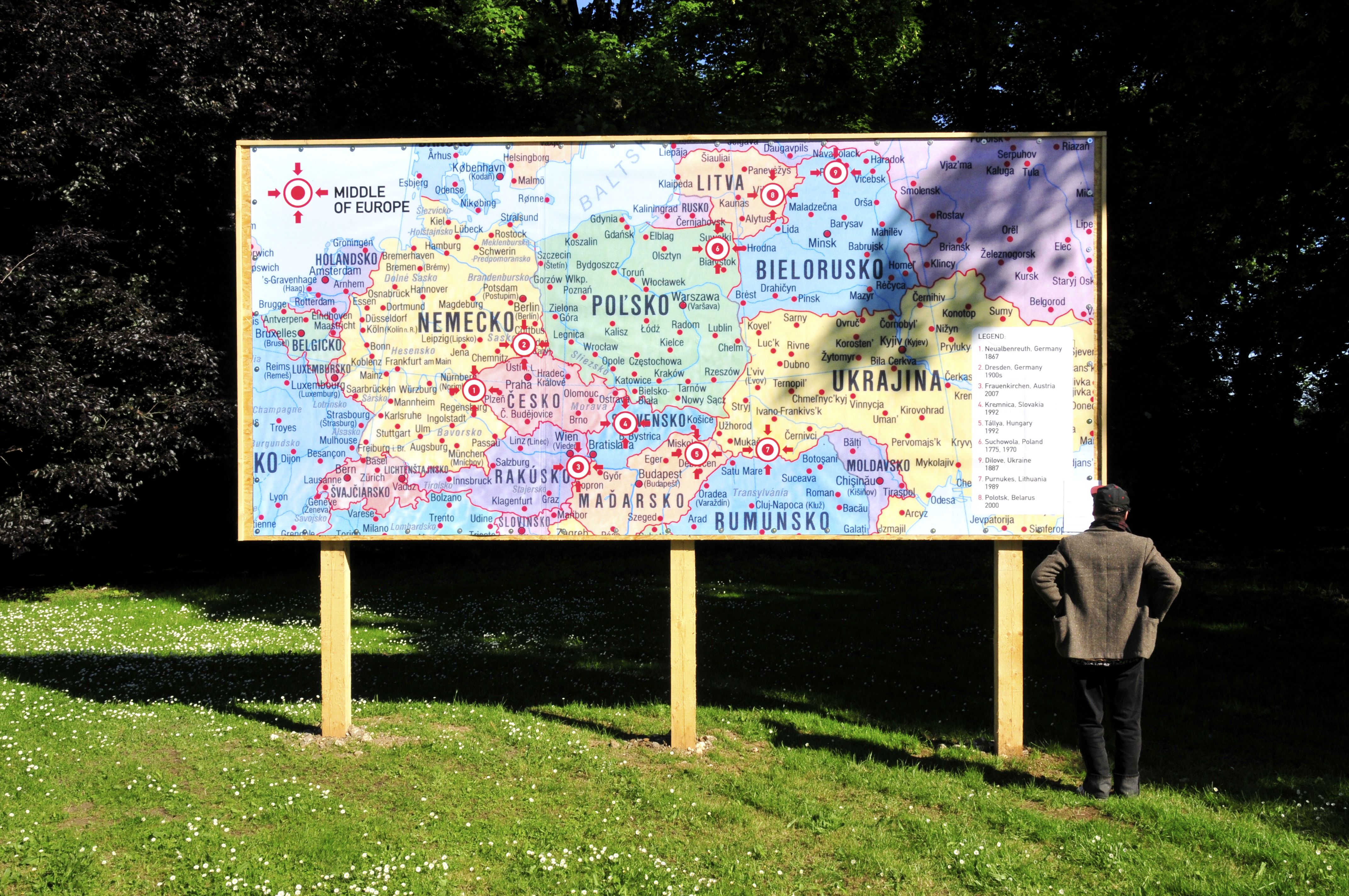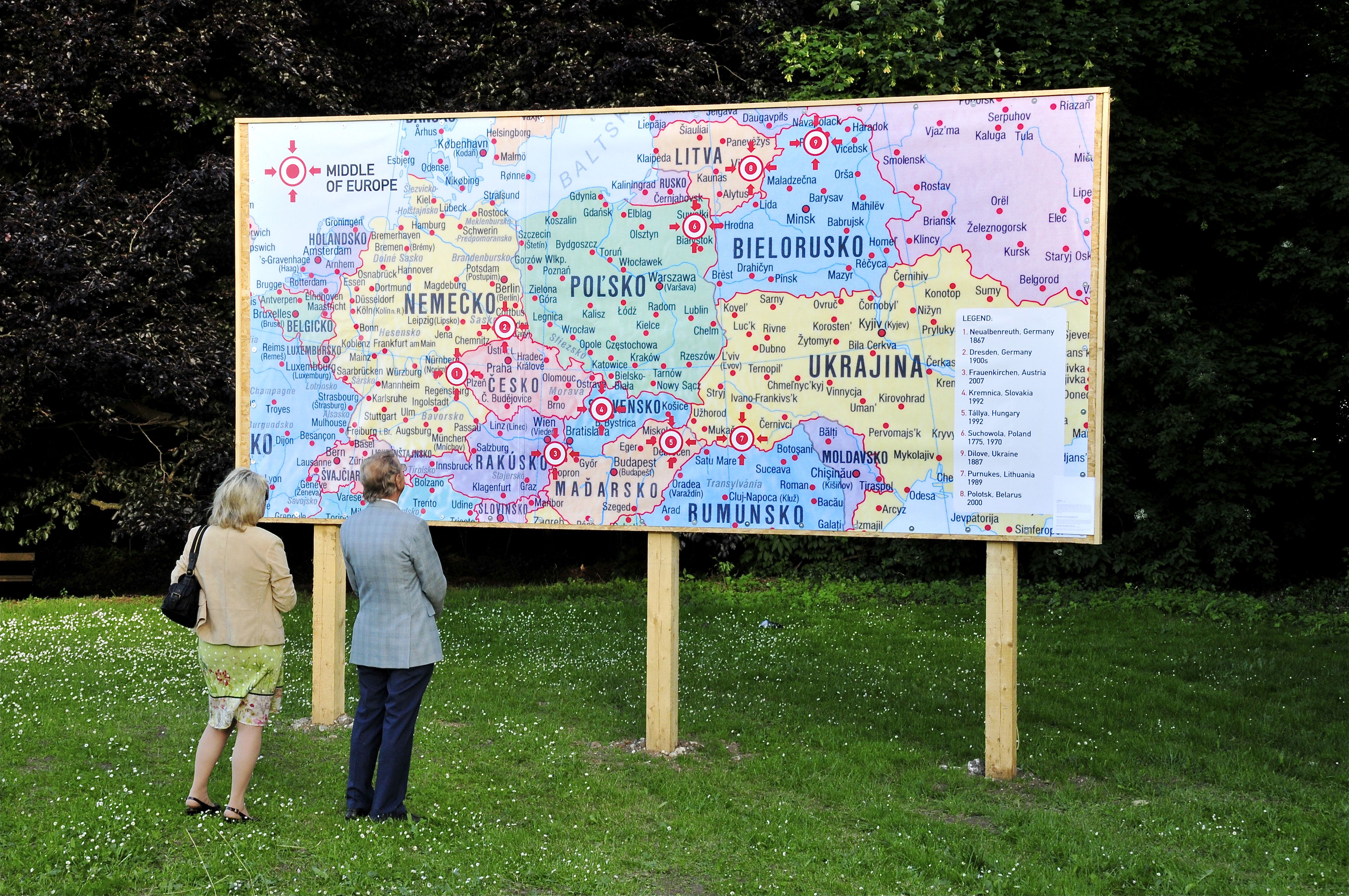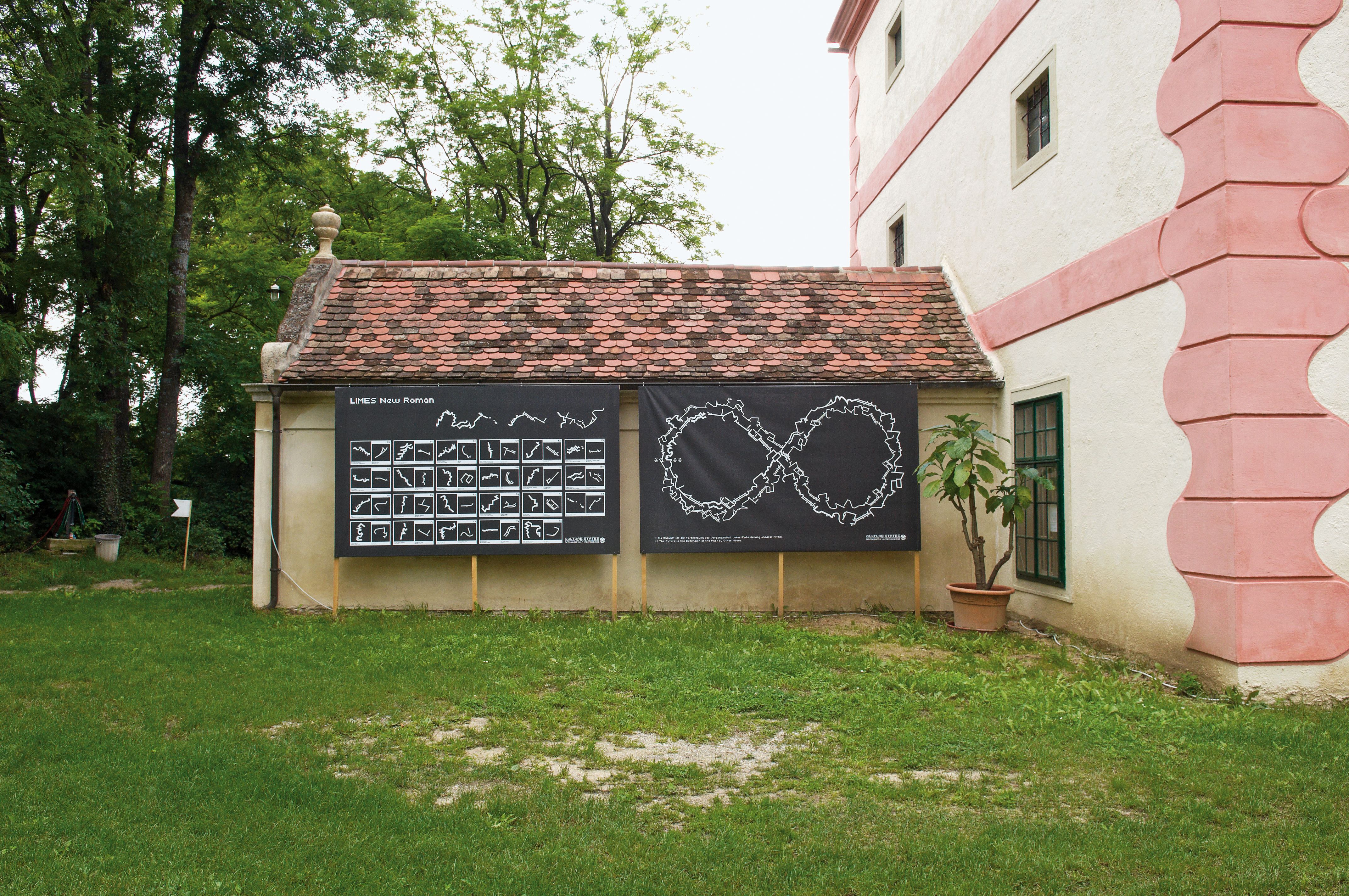Bertha von Suttner Revisited
BackArtists
- With
Information
An event by Public art lower austria in cooperation with the Internationalen Bertha von Suttner Verein and Burgschleinitz-Kühnring.
-----------
Further Information coming soon.
Contributors
- Kuration
Contributions
Isa Rosenberger, Maja Bajević
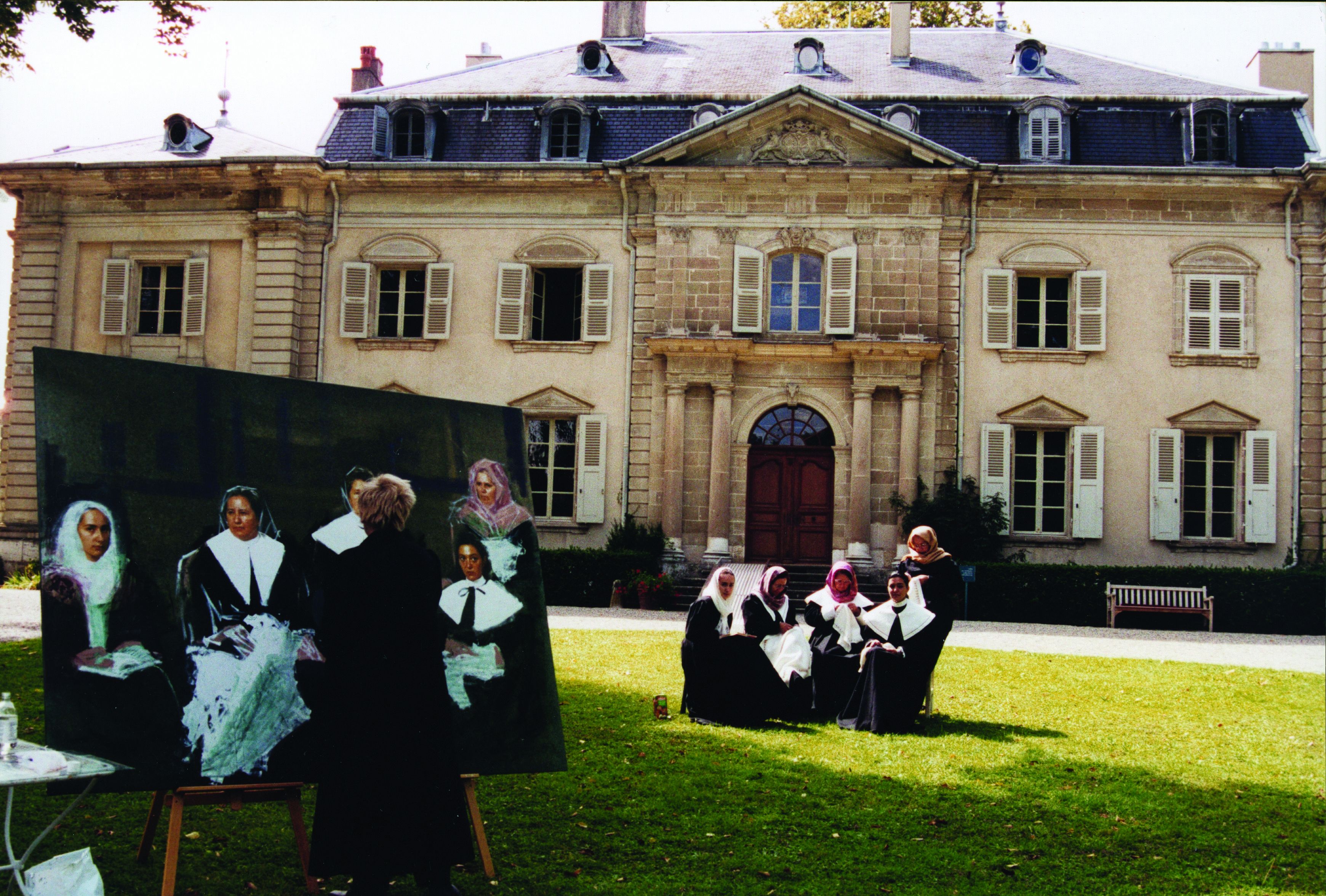
Isa Rosenberger and the Sarajevo born artist Maja Bajevic address the war in Yugoslavia in their works, showing the traumas and wounds of generations. The three-part Women at Work cycle is a complex attempt to approach and engage with the Yugoslavian War for Maja Bajevic featuring refugee Bosnian women. The locations are the scaffolding erected for the rebuilding of the National Gallery in Sarajevo (Under Construction, 1999), Château Voltaire in France (The Observers, 2000) and a Hamam in Istanbul (Washing Up, 2001). The women's handwork is transferred to different places and new contexts — washing ideological slogans from Tito in the Hamam until the clothing disintegrates. A group image results that is inspired by Frans Hals, and can also be read as an allusion to the failure of the Dutch security forces as UN observers in Srebrenica in July 1995. Isa Rosenberger shows her research on the traumatised population in Sarajevo in the 30-minute video Sarajevo Guided Tours (2002). A prologue shows TV excerpts from The Sarejevo Tunnel by Edis Kolar from the time of the besieging of Sarajevo in May 1992, before eight people that Rosenberger had met during a prolonged stay in Sarajevo in 2001 introduce eight places in the city. A different kind of guided tour is designed on the basis of their accounts that shows how life in the city is still marked by the images of siege and destruction. The individual sequences succeed one another like a tour of the city where Rosenberger pursues the question of how places are generated between city, history and individual viewpoints.
Zbyněk Baládran, Jiri Kovanda
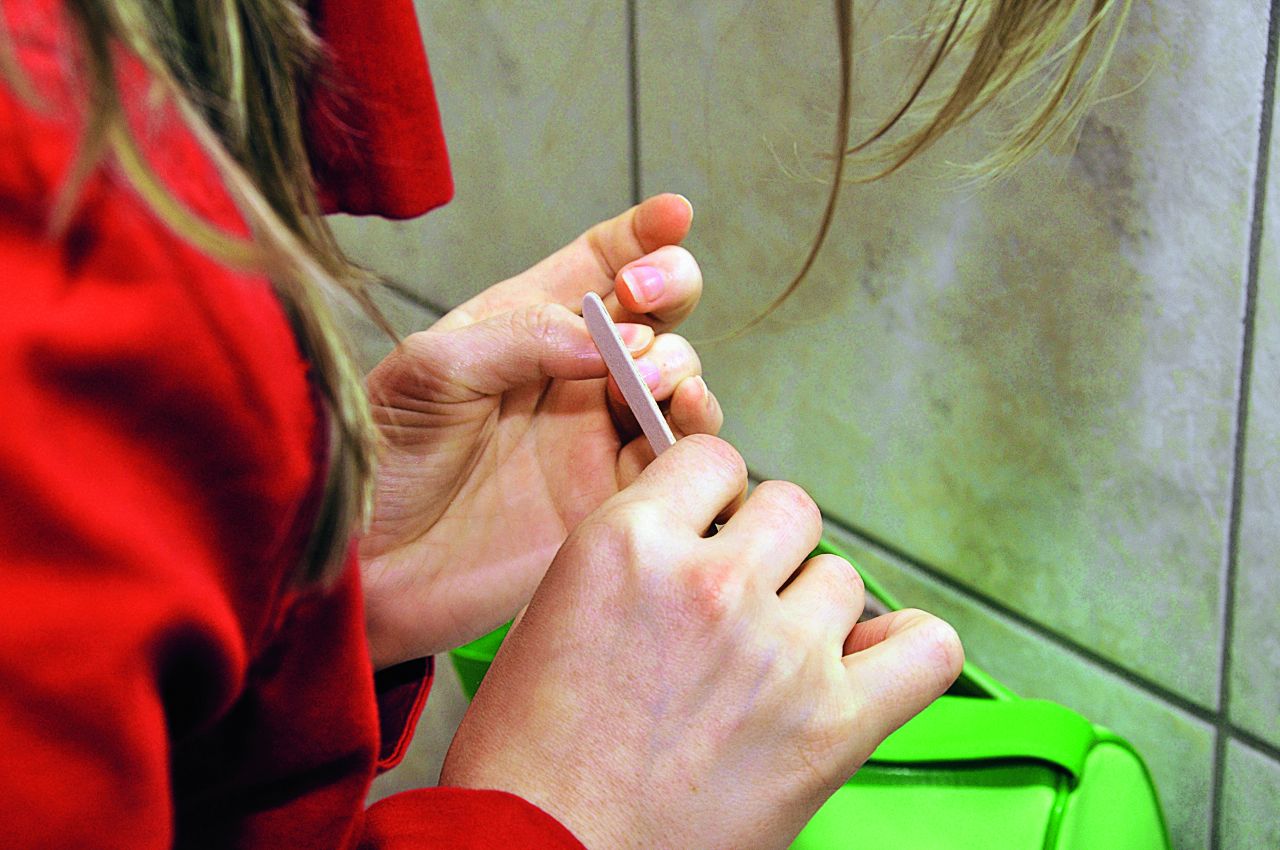
With Jiří Kovanda, who staged a performance at the opening reception, and Zbyněk Baladrán two artists participated in the project who come from Prague, where Bertha von Suttner (née Kinsky) was born. On instructions from Kovanda, Katarina Uhlirová carried out a surreptitious make-up happening in the lavatories that contradicted visitors' expectations with minimal gestures and associations with gender-swapping. For Archive Building, 2008, Zbyněk Baladrán created a linguistic system that was shown as a projection in the Orangery. During a three-month stay in Warsaw, Baladrán conducted archive research into political slogans from demonstrations and protest movements from 1968 to the present day. 150 very different slogans were compiled in a manner that sometimes stands in diametric opposition to the usual ones that dominate a debate or a public discourse. Baladrán isolated these phrases by writing them on paper individually and attached them like clothing on a red thread to a web-like installation. He developed a system through the abstract language that poetically depicts a scientific approach and is also well suited to creating an awareness of the past.

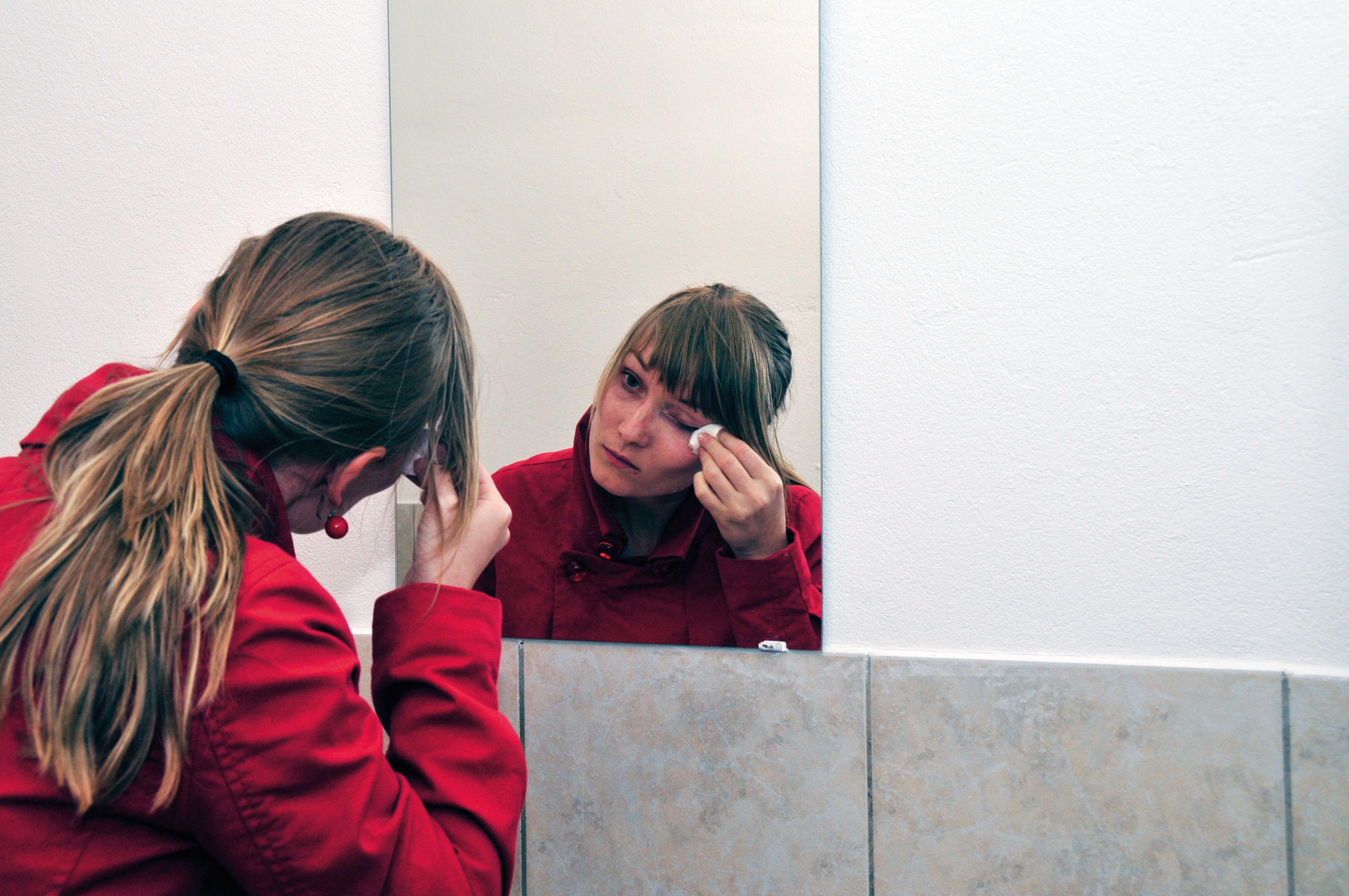
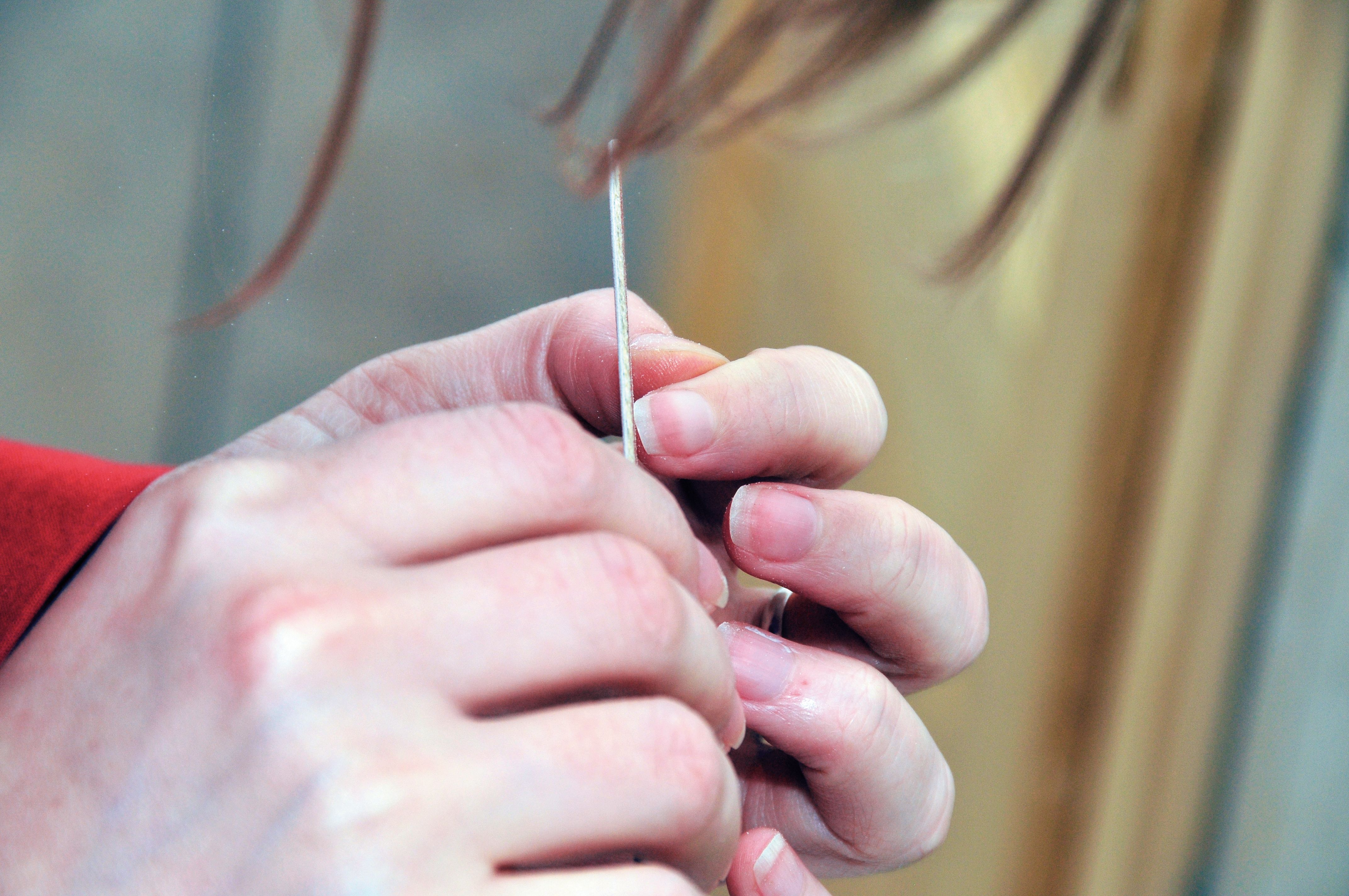
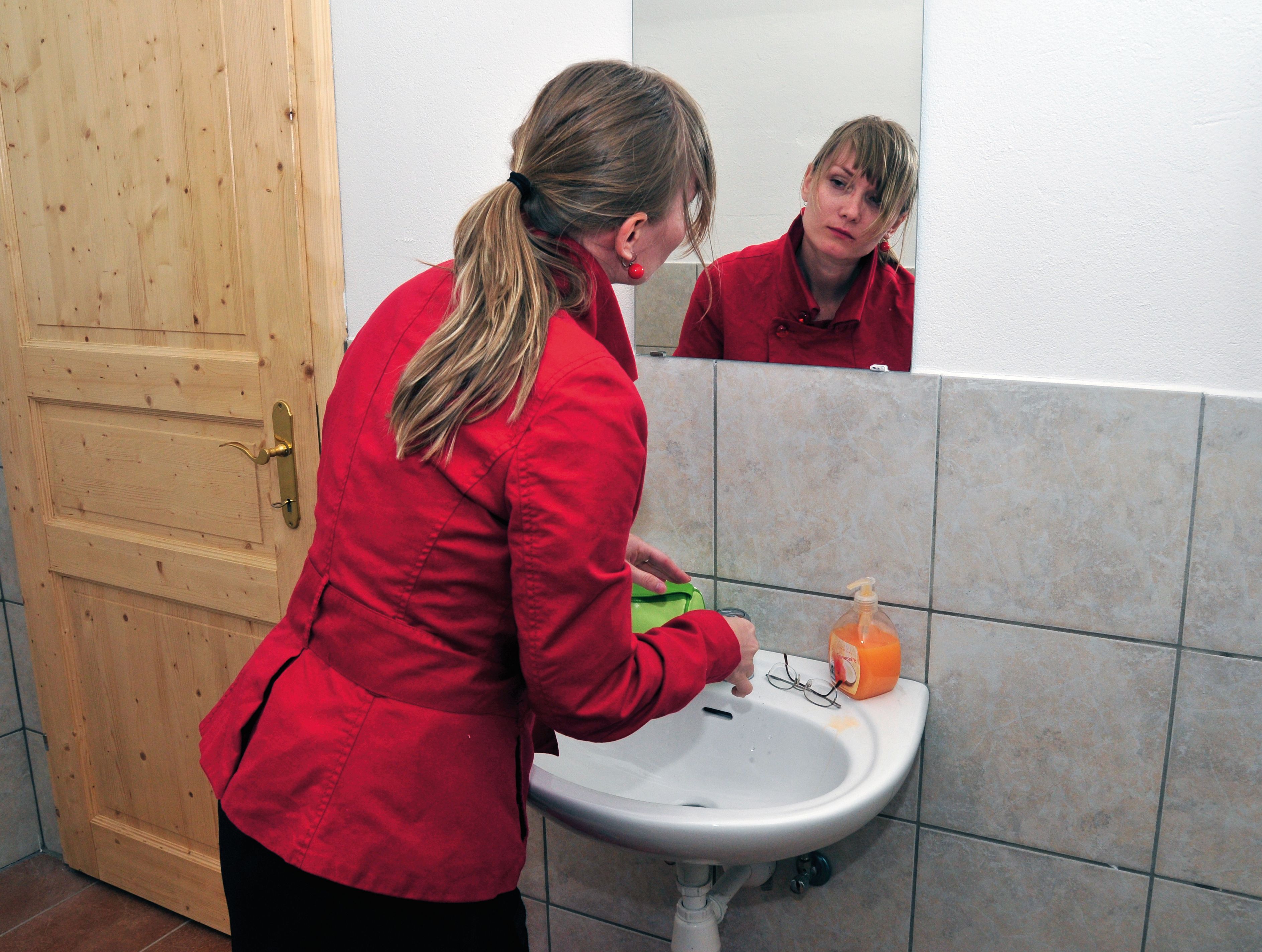
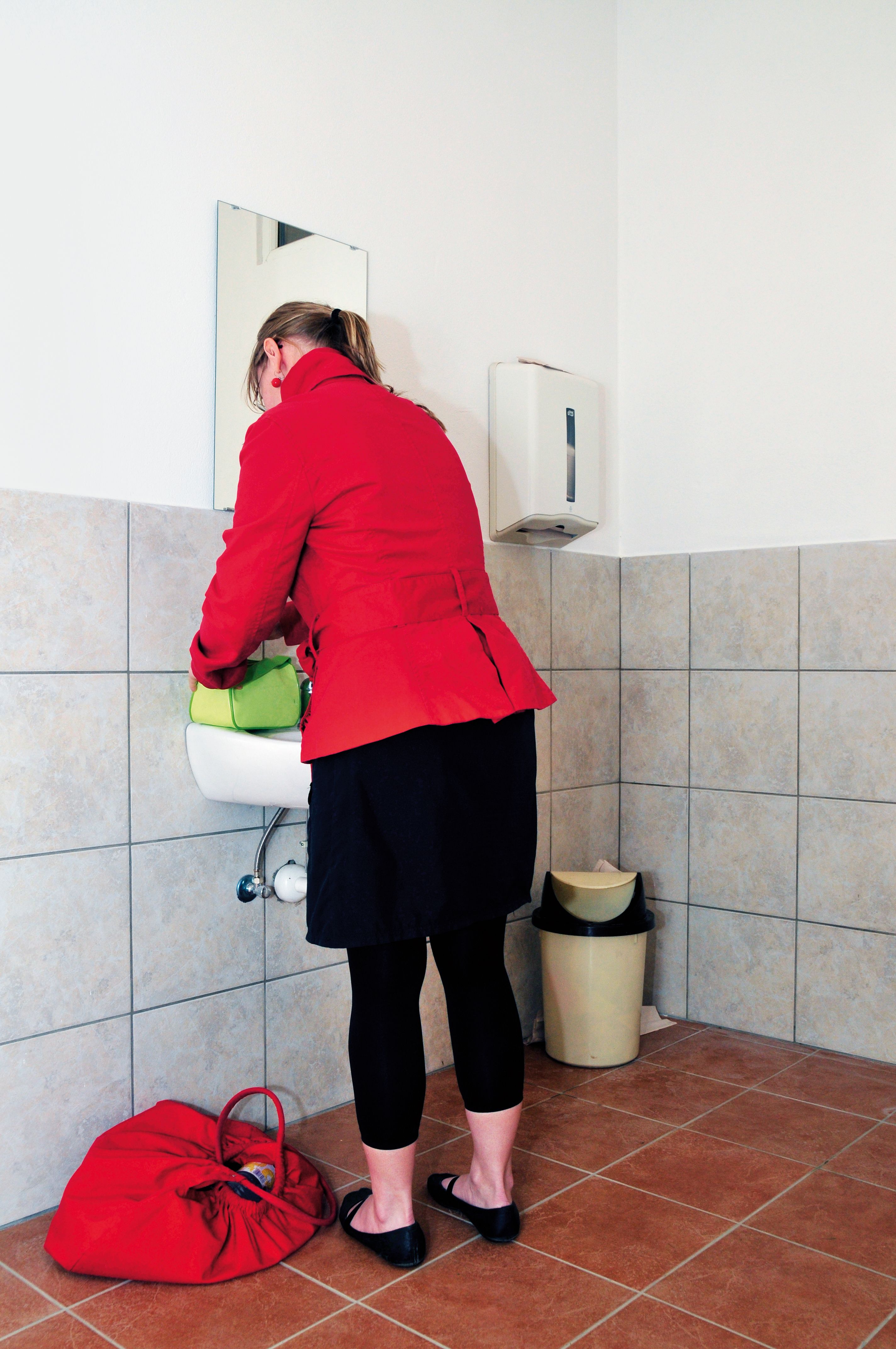

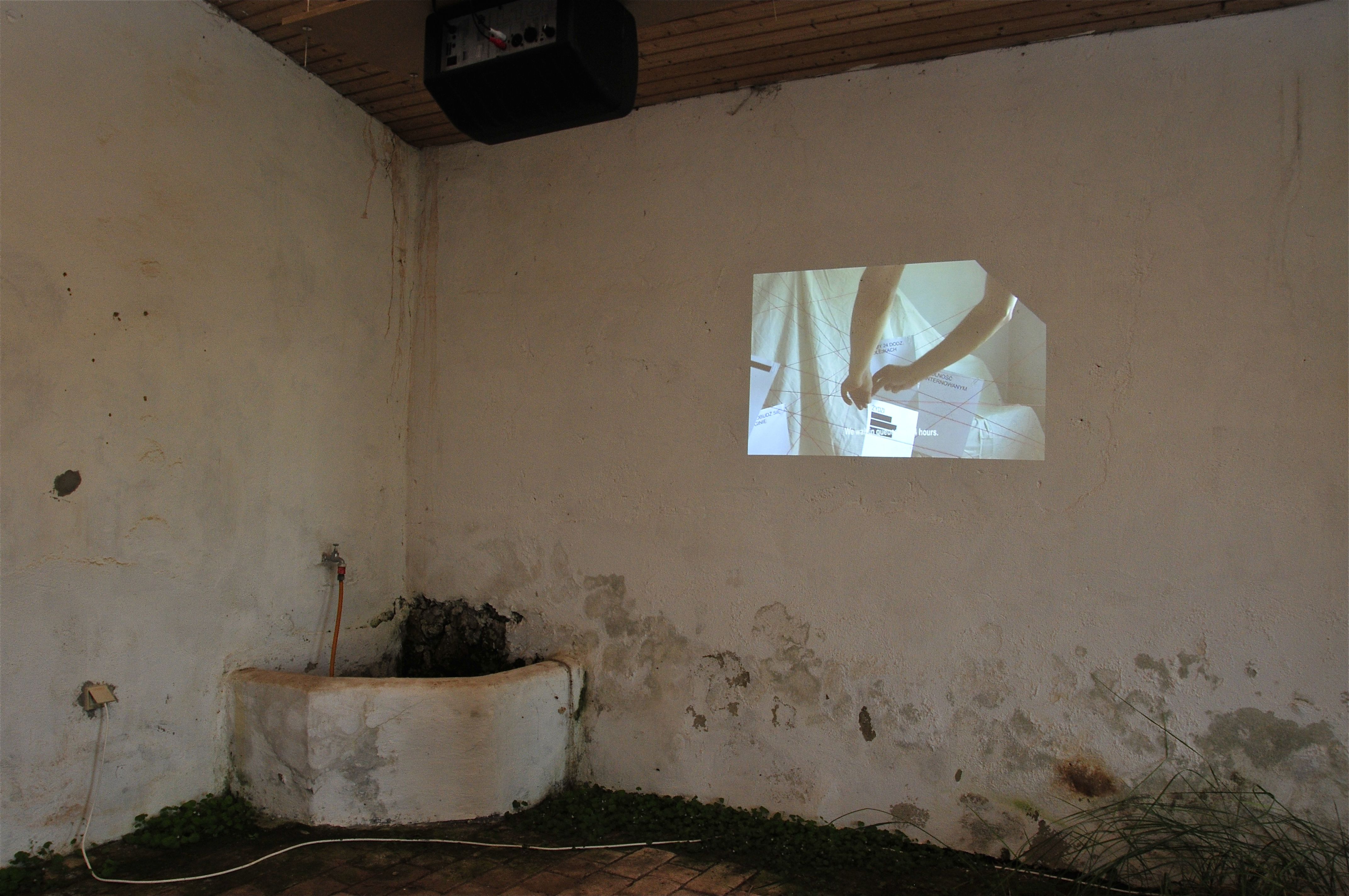
Madeleine Bernstorff
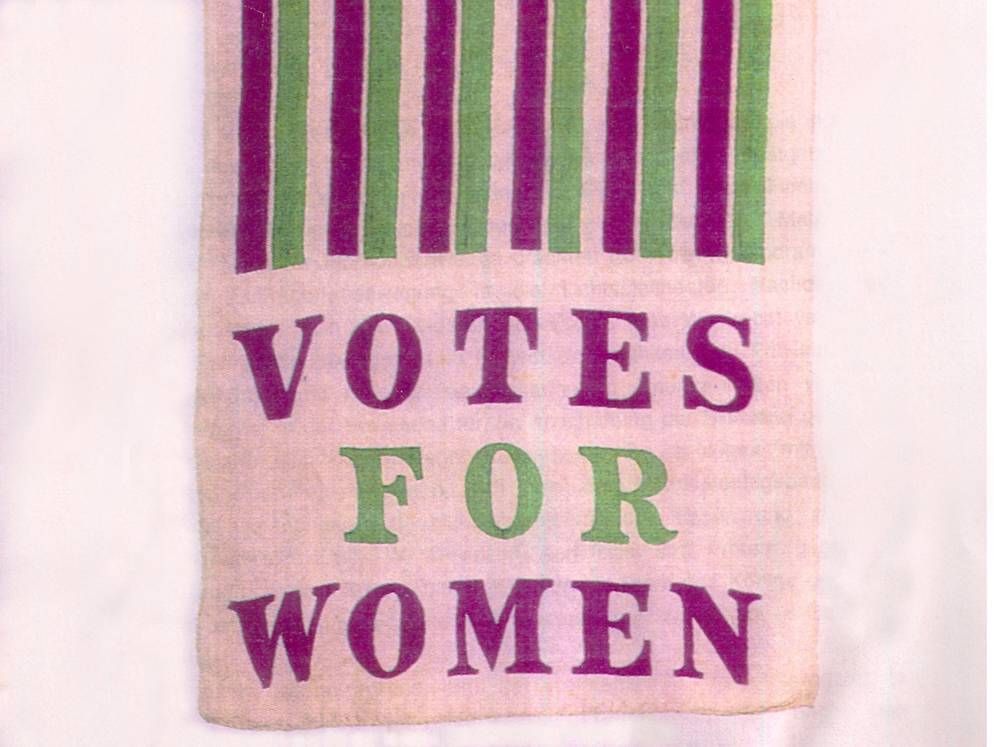
At the opening of the exhibition Bertha von Suttner Revisited the film curator Madeleine Bernstorff screened a programme of (anti-) Suffragette films. At the outset of the 20th century the movement for women's electoral rights also conquered the cinema. A force could be felt on the streets of the major towns and cities of Europe and America that instilled trepidation and looked unstoppable: women were actually organising themselves, often even women from the privileged classes, and reclaiming their right to participate in the building of a democratic society. In 1913 there were over 1000 Suffragettes in prison for their political activism. The films from between 1906 and 1913 were presented as 35mm projections in the park at the opening reception with piano accompaniment (by Gerhard Gruber) as was standard practise in the silent film era. Cinema, still a fledgling industry at the beginning of the 20th century, discovered the Suffragette movement as rewarding raw material for the entertainment industry. Bertha von Suttner was neither fighting for her class nor a Suffragette, however in her novels, which she originally addressed at her own class, she repeatedly asserted the demand for the independence of girls and women. In her later years of life she had contact with the Suffragette movement, especially during her six month tour of the USA (from Los Angeles to Boston). Bertha von Suttner was committed to diplomatic assertion of the peace movement, also securing the movement’s financing and publicising it, organising and attending world peace conferences and congresses while having to tolerate ridicule and criticism as a proactive woman. This is shown by the cartoons selected from the press of the time that are on display in the exhibition with annotations by Laurie Cohen. As is the treatment of this type of politically active woman, embodied by Suttner in exemplary fashion, to be seen in the Suffragette films made between 1906 and 1913.
Christa Biedermann
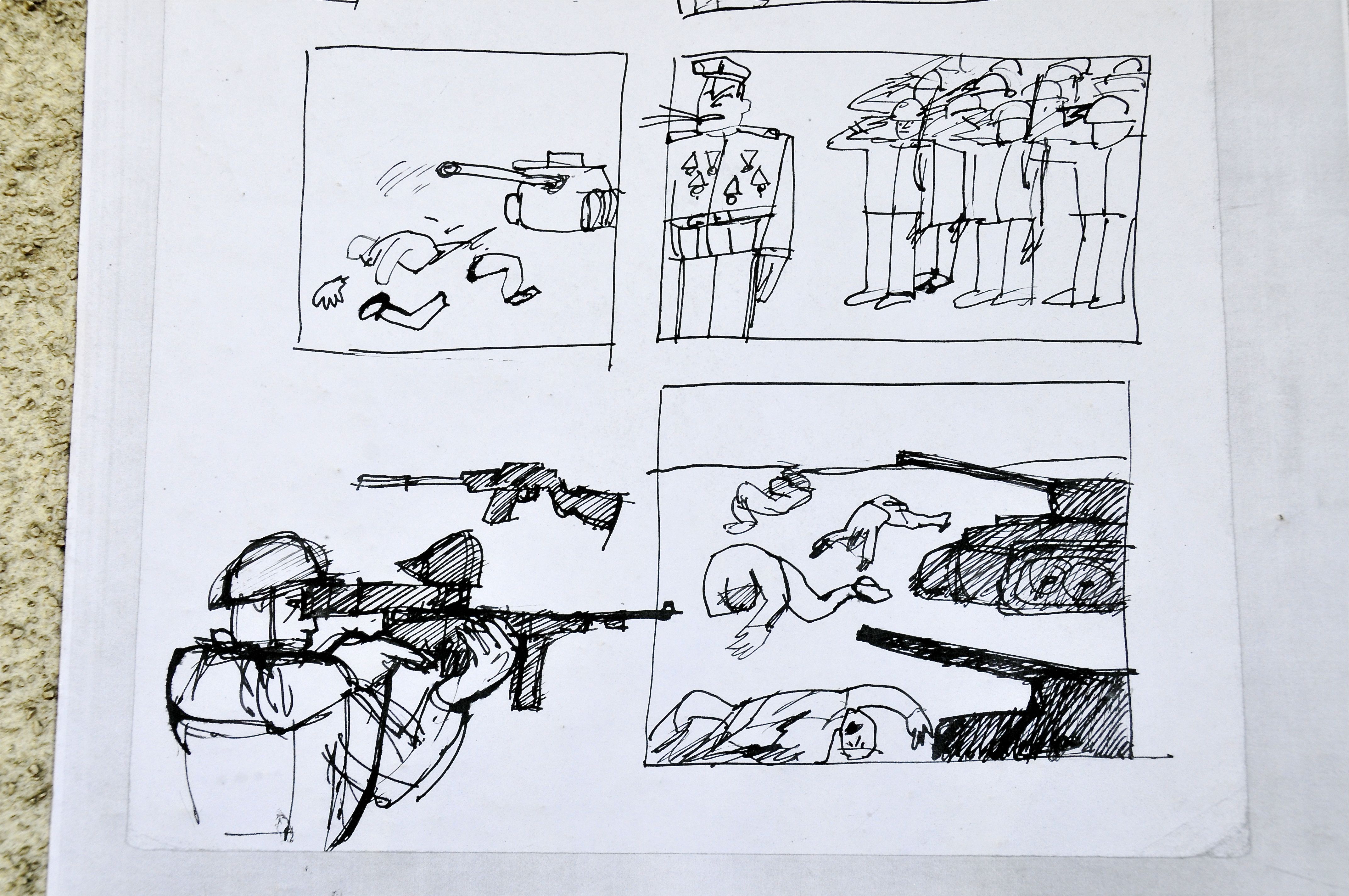
Christa Biedermann satirises the arms industry and military service in her comic-like mural drawing Antimilitarismus-Comix (1979/80) from the perspective of the Austrian feminist peace movement of the 1970s. As an activist in a feminist-orientated peace movement, Frauen für den Frieden (Women for Peace), Christa Biedermann addressed the public in the 1970s with various projects. In her pen and ink drawings, which are designed like comic strips, she addresses the arms race and the Cold War.
In her film Die Mauer (The Wall), 1989–1991, Christa Biedermann engages with the dissolution of a border, i.e. the Berlin Wall, which 'fell' after more than 28 years in the night from Thursday 9 November to Friday 10 November 1989. In "documentary credits", Biedermann captured this process from December 1989 to October 1991 at key points, such as at Checkpoint Charlie, Potsdamer Platz or the Brandenburger Tor.
Pauline Boudry, Renate Lorenz

There is a chronological link in the work by Pauline Boudry and Renate Lorenz as well as in Madeleine Bernstorff work. The protagonist is a domestic servant in Victorian times, a time when Bertha von Suttner's activism and lifestyle did not necessarily conform to the tight conventions of the conservative aristocracy. She and her husband were progressive thinkers and fought against war and burgeoning anti-Semitism. The film Normal Work (2007) consists of a restaging of four historical photographs of the servant Hannah Cullwick, in which she adopts poses that traverse different social positions, 'race' and gender. Alongside her job as a cleaner Cullwick produced a series of staged photographs, a medium that was still new at the time, diaries and letters. Hannah Cullwick's portraits and self-portraits, which do not only show her as a servant but also in class or ethnic drag, were part of a sado-masochistic relationship where she and Arthur Munby, an aristocrat, were involved in an unequal and socially deplorable liaison.



Laurie R. Cohen
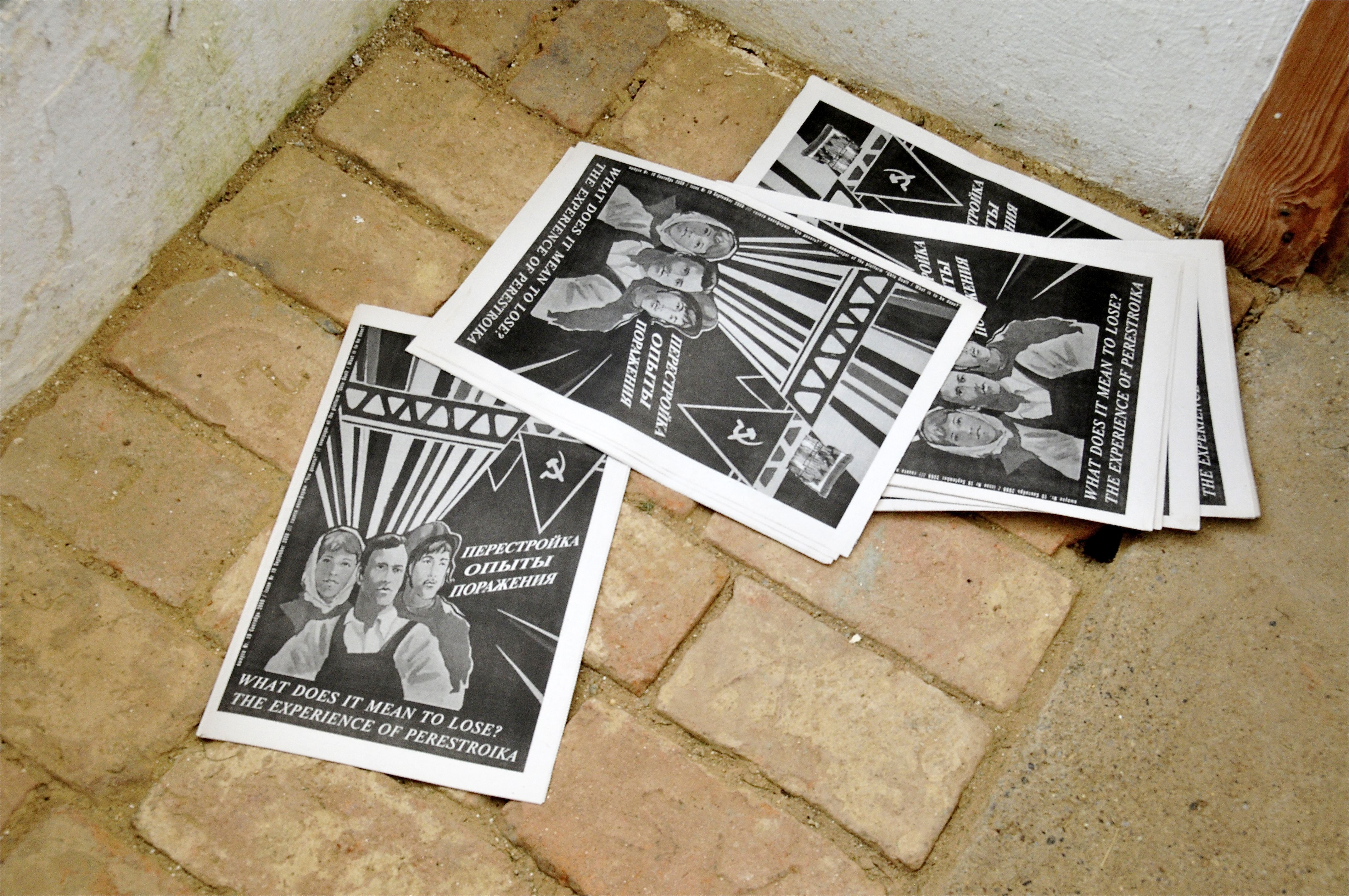
Bertha von Suttner was committed to diplomatic assertion of the peace movement, also securing the movement’s financing and publicising it, organising and attending world peace conferences and congresses while having to tolerate ridicule and criticism as a proactive woman. This is shown by the cartoons selected from the press of the time that are on display in the exhibition with annotations by Laurie Cohen. As is the treatment of this type of politically active woman, embodied by Suttner in exemplary fashion, to be seen in the Suffragette films made between 1906 and 1913.
Chto Delat
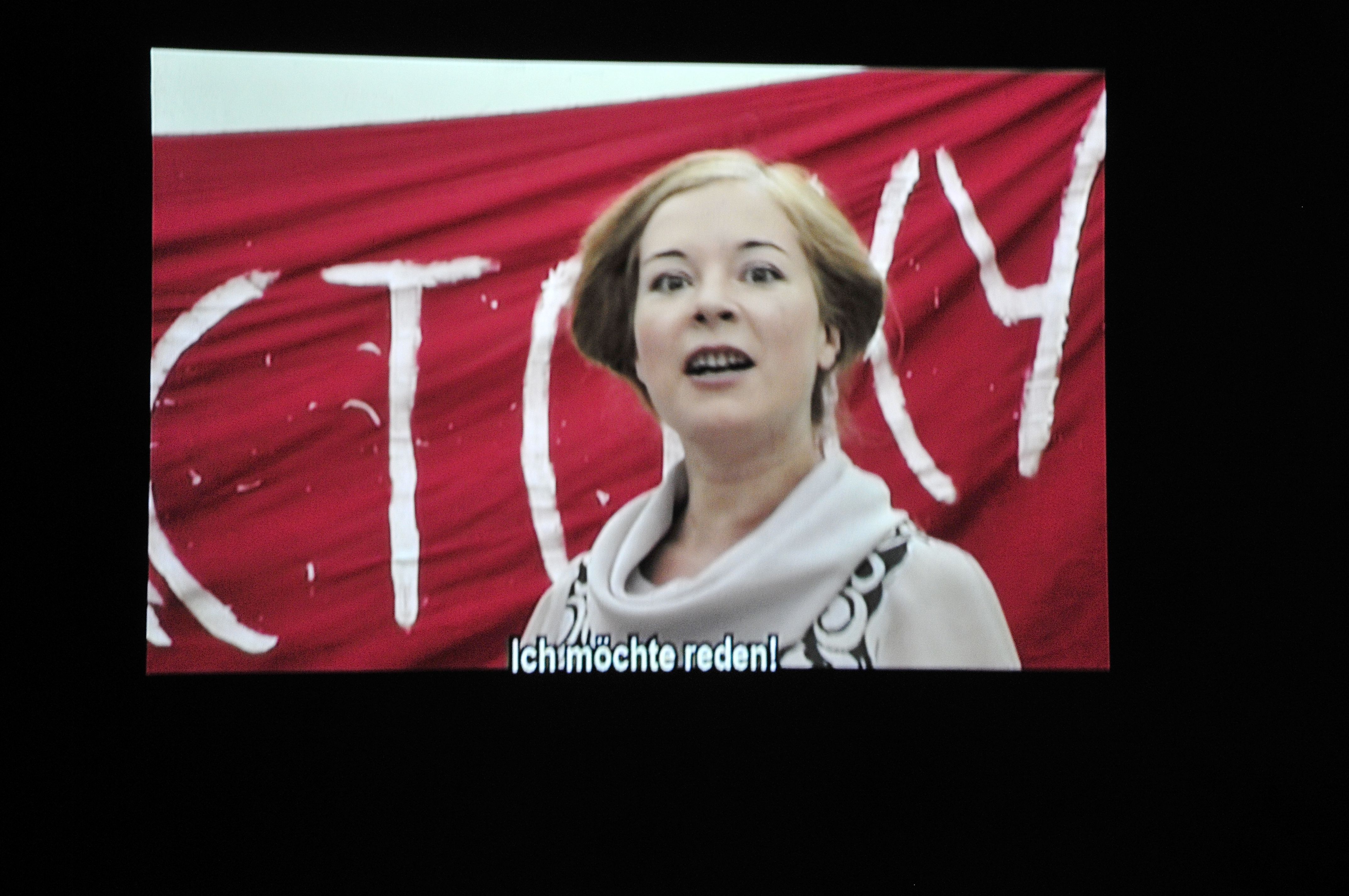
In Brechtian style Chto Delat, a Russian artist group, analyses the most recent Russian engagement with its past in 1991 in a satire: The Victory over the Coup, a Perestroika play completed in 2008. It is evident that Bertha von Suttner came into contact with Nikolay Chernyshevsky’s novel Čto delat' (What is to be Done), published in 1863, during her time in the Caucuses — a book that not only inspired Lenin to write the text of the same title but also gave the artists' group its name. 'What is to be Done?' was intended to address far-reaching social change along with Socialism and women's emancipation, just as Bertha von Suttner's novel published in 1889, Lay Down Your Arms, was intended as an appeal for worldwide disarmament.


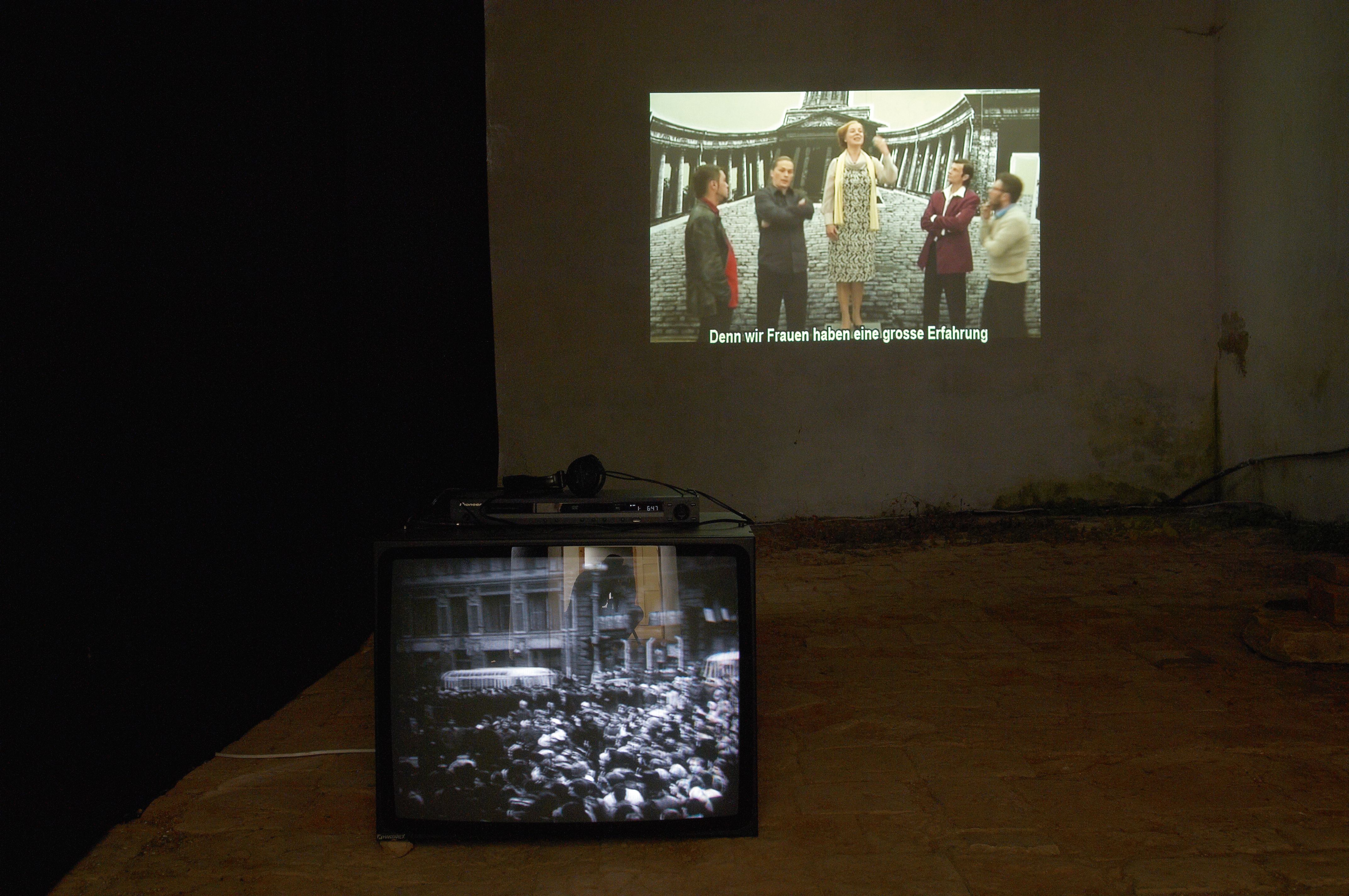
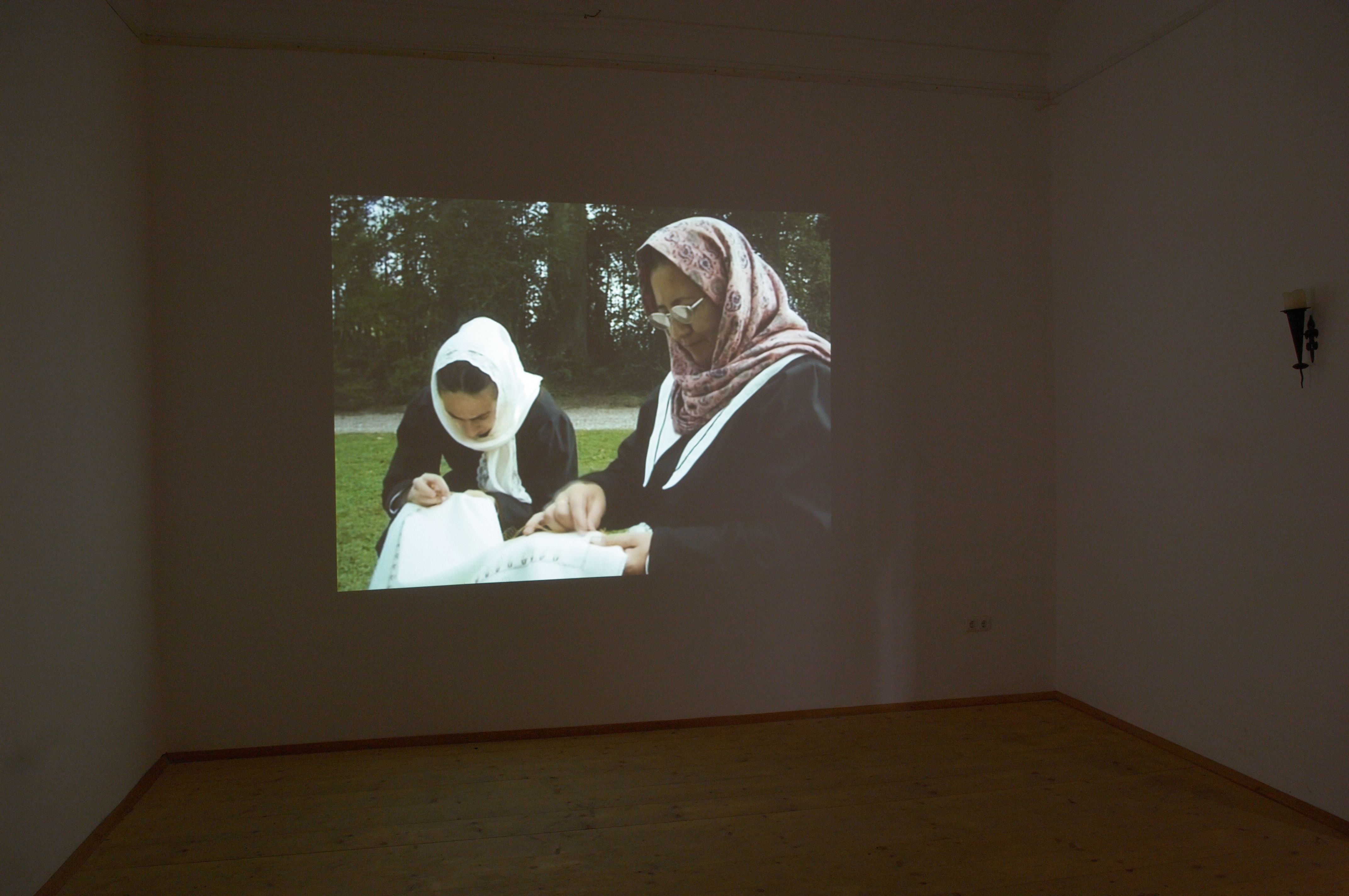
Ilona Neméth
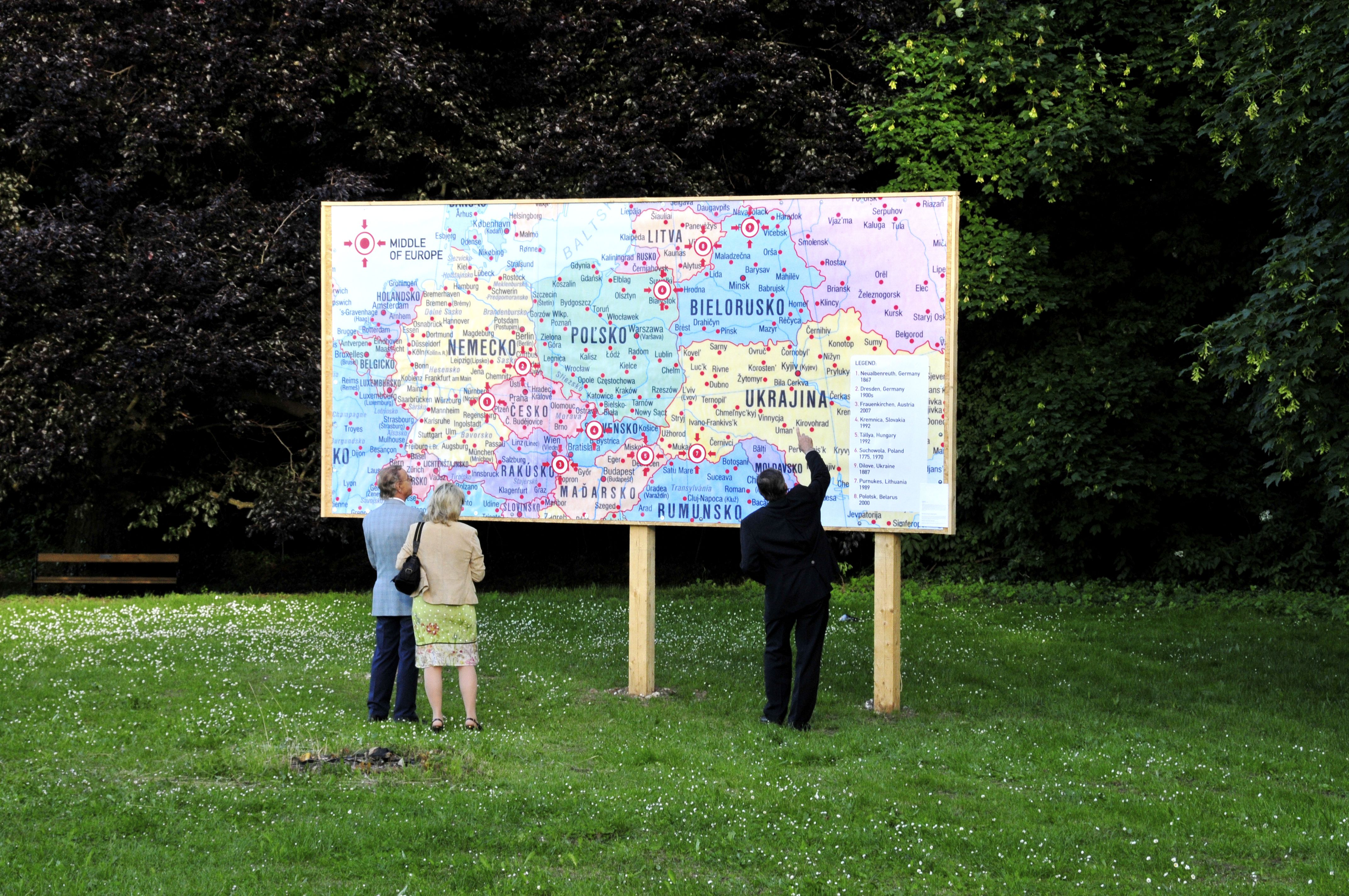
Even though Mittelpunkt Europas (The Centre of Europe) engages with a quantifiable given, with the billboard Die Mitte Europas (2006) the Bratislava-based artist Ilona Németh shows that most of the countries in Europe have claimed to be this European centre at sometime in the course of history. She represents this fact, far from without irony, on a map of Europe. In places she also includes the date of such exaggerated claims, which often went hand in hand with situations of radical change — as in the case of Slovakia, where an appropriate memorial was erected in Kremnica shortly before independence.
Société Réaliste
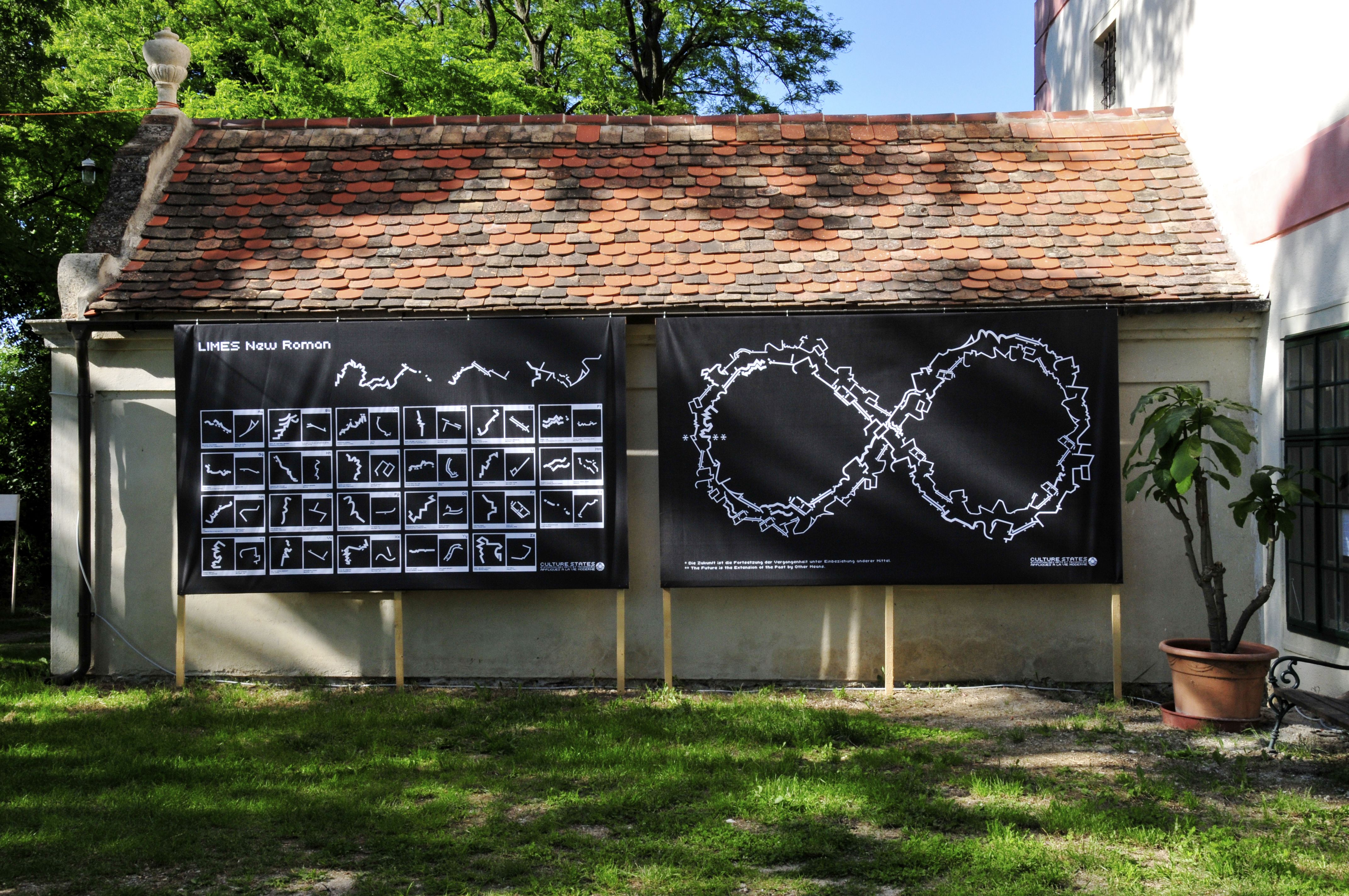
A syntax of the border unfolds in the two billboards LIMES New Roman and Die Zukunft ist die Fortsetzung der Vergangenheit unter Einbeziehung anderer Mittel (The Future is a Continuation of the Past by Other Means), 2009, by the Paris based artist duo Société Réaliste (Jean-Baptiste Naudy and Ferenc Grof). The artists used a self-invented alphabet for the quotation, the cryptographic LIMES New Roman, in which they used the lines of borders for the letters. The idea is based on the Utopiensium Alphabetum by the former law student Thomas More, and forms a referential system for the many historical and current borders that is both literal and metaphorical — from the limes of the Roman Empire via the iron curtain and the Berlin Wall to the barriers in Belfast, Macao etc. The encrypted quotation in the analemmatic form is a reference to the frequently used sentence ascribed to the military theorist Carl von Clausewitz: "War is a continuation of political relations by other means".
